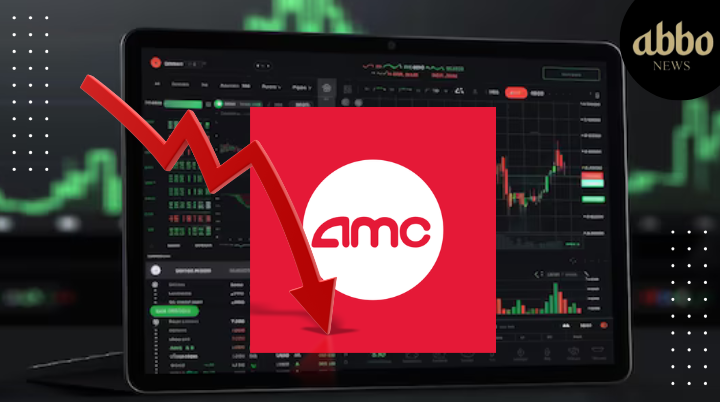Pioneer Natural Resources (PXD) is one of the leading independent oil and gas exploration & production companies in the United States. Pioneer Natural Resources (PXD -0.62%) recently released its third-quarter financial results. They were reasonably good, but that was to be expected given the upward trend in oil prices during the quarter. But now, the stock price is being driven by something else.
According to Pioneer Natural Resources News, Pioneer has a strong production base across the energy-rich Permian Basin. But is PXD stock a good investment option right now?
Company Overview
Founded in 1997 & headquartered in Irving, Texas, Pioneer Natural Resources boasts a long history of exploration and production success. The company focuses on unconventional shale oil development, utilizing advanced technologies like horizontal drilling and hydraulic fracturing to extract oil from previously inaccessible rock formations.
With its presence concentrated in the highly productive Permian Basin, Pioneer benefits from favorable geological conditions and efficient logistics infrastructure.
Strengths
- Strong operational performance: Pioneer boasts a consistent track record of operational excellence, demonstrating efficient cost management and steady production growth. This translates into strong profitability and consistent cash flow generation.
- Focus on the Permian Basin: The company’s strategic focus on the Permian Basin, currently one of the most prolific and cost-competitive oil regions globally, provides a significant advantage. The Permian offers vast reserves, efficient pipeline infrastructure, and continuous technological advancements, positioning Pioneer for long-term growth.
- Disciplined financial management: Pioneer prioritizes a conservative financial approach, focusing on debt reduction and maintaining a healthy balance sheet. This conservative strategy minimizes risk and positions the company for future growth opportunities, even in volatile market conditions.
- Strong dividend track record: Pioneer consistently distributes pioneer natural resources dividends to shareholders, offering an attractive income stream for investors seeking steady returns.
Weaknesses
- Dependence on oil prices: As an oil and gas company, Pioneer’s financial performance is directly tied to oil prices. Fluctuations in global oil markets and potential future transitions towards renewable energy sources can significantly impact the company’s profitability.
- Limited geographic diversification: Pioneer’s exclusive focus on the Permian Basin exposes the company to risks associated with this single geographic region. Potential geological challenges or regulatory changes in the Permian Basin could negatively impact the company’s operations.
- Environmental concerns: The oil & gas industry faces increasing scrutiny regarding its environmental impact, with growing pressure to transition towards cleaner energy sources. This can lead to stricter regulations and potential public backlash, posing challenges for Pioneer’s future operations.
Opportunities
- Merger with Exxon Mobil: The proposed merger with Exxon Mobil presents a significant opportunity for Pioneer to unlock substantial synergies and achieve greater scale. Exxon’s global reach, technological expertise, and financial resources could propel Pioneer’s growth and mitigate exposure to market fluctuations.
- Growing global energy demand: Despite the rise of renewable energy, global energy demand is projected to continue growing in the near future. This could translate into increased demand for oil and gas, potentially benefiting Pioneer in the short to medium term.
- Technological advancements: Advancements in exploration and production technologies, including automation and enhanced drilling techniques, can further improve efficiency and potentially unlock additional oil reserves, benefiting Pioneer’s long-term prospects.
Threats
- Competition: Many companies are competing for market share in the fiercely competitive oil and gas sector. This competition can pressure prices and limit profit margins for companies like Pioneer.
- Geopolitical instability: Global political tensions and regional conflicts can disrupt oil supplies and cause price volatility, impacting Pioneer’s financial performance.
- Transition towards renewable energy: The long-term shift towards renewable energy sources could pose a significant threat to the oil and gas industry in the future. As governments and consumers increasingly favor cleaner energy alternatives, the demand for oil and gas could decline, negatively impacting Pioneer’s long-term sustainability.
Financial Health
-
Revenue and Profitability
The return on capital invested in Pioneer is about $514, about 19%. The company has impressively gained a huge profit, which has improved its metrics.
-
Debt Profile
Pioneer’s balance sheet is robust; as of December 31, 2023, it has $4.6 billion in net debt. As of December 31, 2023, the company’s cash position was $2.2 billion, consisting of $240 million in cash and a $2.0 billion unsecured credit facility that had not yet been drawn upon.
-
Cash Flows
Free cash flow of Pioneer Renewable stock was $1.2 billion for the fourth quarter and $4.1 billion for the entire year 2023 due to operating activities, which generated cash flow from $2.3 billion and $8.4 billion in the fourth quarter and full year 2023, respectively.
Production Outlook
-
Permian Position
Pioneer has a tier-one position in the Midland Basin portion of the Permian, owning high-quality acreage and assets. The Permian is the top oil-producing region in the U.S. due to favorable geology and low breakeven prices.
-
Output Forecasts
For 2022, Pioneer expects to average production between 623,000 to 648,000 barrels of oil equivalent per day (BOE/d). Natural gas and oil outputs are both expected to see double-digit percentage gains year-over-year.
-
ESG Efforts
Pioneer initiated comprehensive GHG reduction initiatives and GoalZERO safety program to address emissions and sustainability issues. However, oil and gas drilling carries inherent environmental risks.
Industry Environment
-
Oil Prices
With strong demand and tight supplies, most analysts foresee relatively high oil prices over the next few years, even accounting for economic slowdowns. This bodes well for Pioneer’s earnings.
-
Competition
The Permian Basin has seen heavy investment from independents like Pioneer and supermajors like Exxon and Chevron. Maintaining low production costs is paramount to staying competitive.
-
Investor Sentiment
Despite the turbulence, analysts remain bullish on stocks like PXD, which have strong Permian footprints that lead to positive ratings. However, bear cases cite recession fears and long-term uncertainties around fossil fuel usage negatively impacting valuations.
Investment Considerations Before Investing in Renewable Resources
- Market Growth Potential – Assess expected solar, wind, and geothermal growth trajectories, etc. Consider policy impacts, cost competitiveness vs traditional energy, and climate change momentum.
- Government Incentives – Tax credits, special depreciation, rebates, etc., can improve returns. However, policies can change over decades-long projects.
- Upfront Capital Costs – Massive upfront infrastructure investment is required before renewable generating assets start producing saleable energy. Access to financing is vital.
- Technology Shifts – The renewable sector evolves quickly. Innovations may outpace existing assets. Account for R&D trajectories when modeling long-term viability.
- Grid Interconnection – Connecting projects to local grids requires complex synchronization and costs. Transmission capacity must also support output.
- Permitting – Navigating federal, state, and local permitting processes can take years and require substantial legal/consulting efforts, adding risks.
- Offtake Agreements – A power purchaser agreement ensures guaranteed operational revenues.
- Operations & Maintenance (O&M) – O&M of complex mechanical and digital renewable assets requires specialized skill over decades. Budget accordingly.
Carefully investigating these areas clarifies renewable energy investment risks and profitability potential. Consult experts like financial advisors, accountants, and project analysts before committing capital. If you want to read more about these strategies, check this: https://abbonews.com/us-markets/top-energy-stocks-to-buy-in-2024-solid-dividends-plus-growth-potential/
Conclusion
Pioneer Natural Resources is an attractive investment for those bullish on oil and gas. It has strong operations, a prime strategic location, and favorable market tailwinds.
However, risks remain around macro-economic issues, emissions-related regulations, and increasing competition across the Permian Basin. One should carefully weigh all angles before buying PXD stock.
Peter Williams, a financial writer with over five years of experience, specializes in covering stock market movements, bond markets, commodities, and macroeconomic trends.










